Ale di Lullo is one of the most prolific photographers in the mountain bike world. You’ve definitely seen his work – he’s photographed 19 years of Mountain Bike World Cup races, as well as countless product launches and sponsored athletes. It’s his shot of Brage Vestavik in the mountains of Alaska that’s wrapped around Issue 160 of Singletrack World. After so many years in the industry, you might think getting a cover shot is just another day at the office – but print still gets Ale stoked. He’d just moved house, so over a slightly shonky internet connection, and with a few interruptions from his cat, Ernesto, we sat down for a chat about how he got here, and what keeps the fire burning.

Born near Lake Garda, Italy, in 1975, Ale discovered mountain biking after a snowboarding injury had the doctors advising him to try something else. Friends in California got him hooked on downhill and freeride, and love for this side of mountain biking stayed with him during student days.
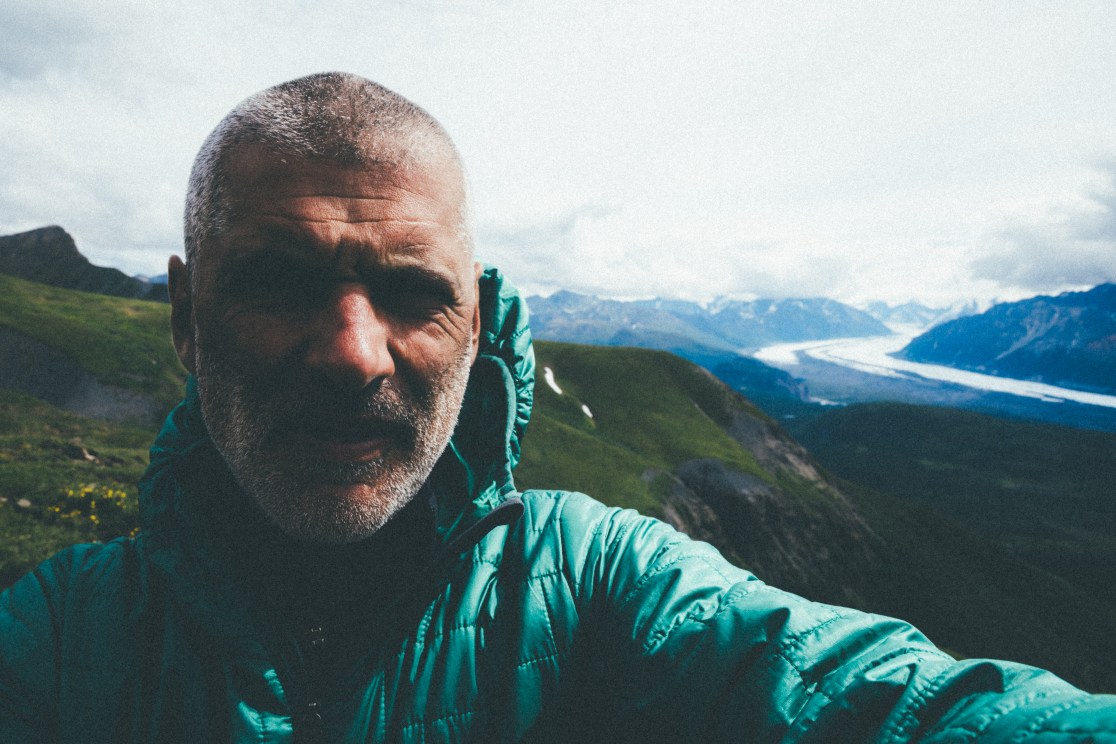
AdL: I was studying architecture with industrial design and graphic communication at university. It was 2003, and I could use Photoshop, I could use Illustrator, I could do video, I could do all the digital stuff, just as it was really beginning.
I found myself with a strong passion for mountain biking, and a lot of new skills. I was always interested in photography, because my family was when I was a kid. But I never thought to make a profession out of it because film was too complex. I was shooting film before, like, amateur level, so I was familiar with you know, the darkroom and all the processing. But when [things went] digital and I found myself with a lot of skills, including the software, I was like, ‘Wow, now it’s possible to be a photographer!’.
Latest Singletrack Merch
Buying and wearing our sustainable merch is another great way to support Singletrack
I was also able to do videos… I put together a little team of university mates, and we went to Pila where there was a World Cup in 2004, and to Livigno World Championship, and then there was the Catania, Red Bull District. There were a few events nearby in Italy, so we did a portfolio kind of thing. We went out there and tried!
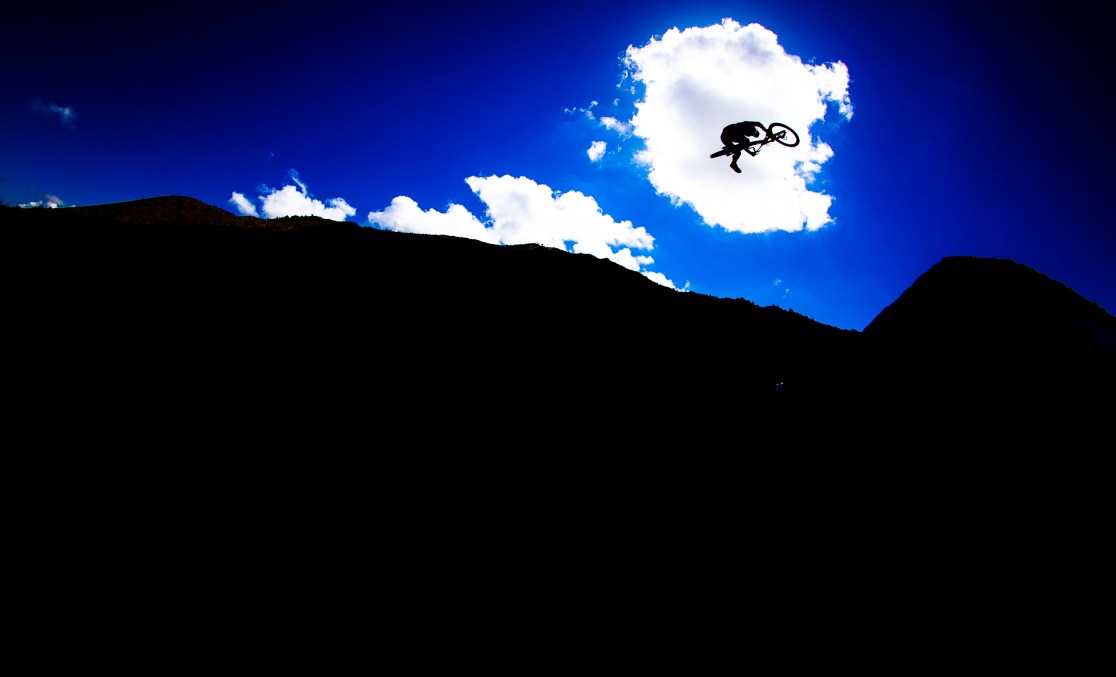
I went to Marzocchi to show this video, and they told me, ‘Oh, this is awesome, but there’s no need for videos. The only video that we do, we pay Freeride Entertainment, and we do a DVD’. There was no social media, there was no outlet for videos, so it was a little bit too early. So the team kind of fell apart, also because my mates were not as passionate as I was – they were not even mountain bikers… But I found myself with a lot of cameras and stuff, and I said, ‘Well, photography, I can sell photos for sure, and I know I can do good ones!’. I was convinced of that.
I knew that photography was my thing, that I could do good. I’m not arrogant, I don’t like arrogant people, and so it’s hard for me [to say], but I knew I could do good. It’s like something that doesn’t belong to me, to say that! But I was looking at the photos on Dirt Magazine, on Singletrack back then… all the magazines that would show good photos… I knew I could do it.
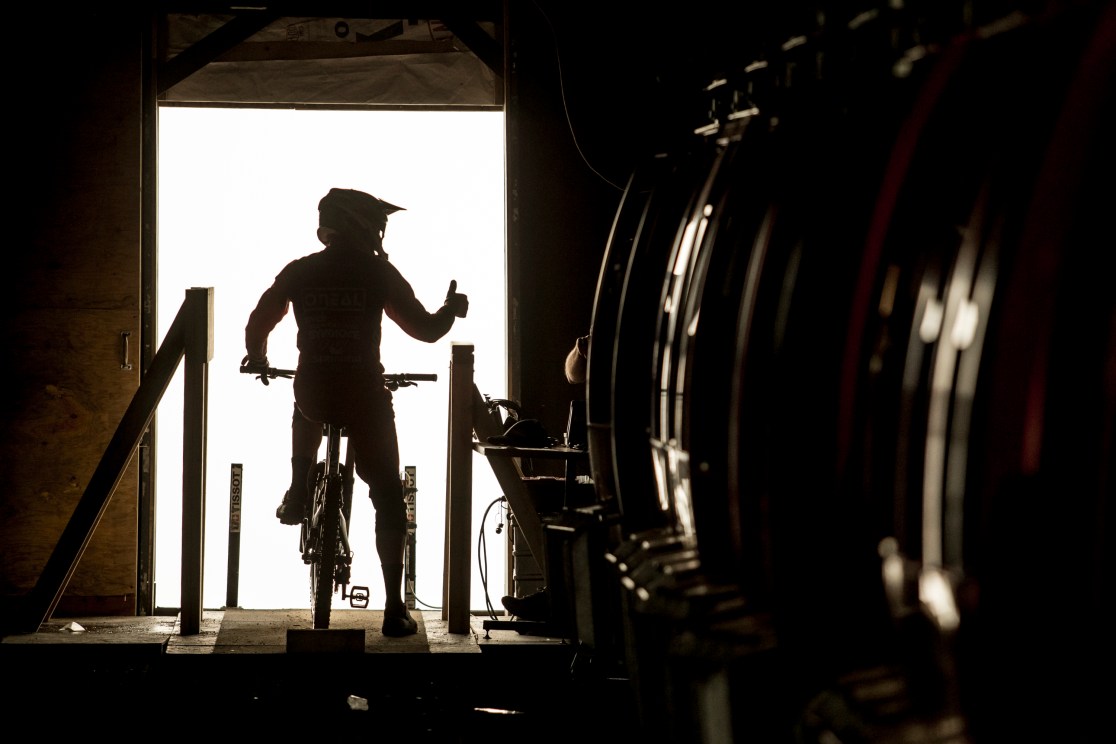
Marzocchi and Tarek [Rasouli] gave me a chance… they needed someone in Europe. So I could travel enough for a season of contests, put together a little portfolio, get to know people, and fortunately it worked out. If I look at my photos back then, I’m surprised that people was paying me! It was very different, back then. Back then, it was mostly to have shot ‘the banger’, and then a few other shots. So it was totally different. Now it’s crazy. Now you have to tell the whole story.
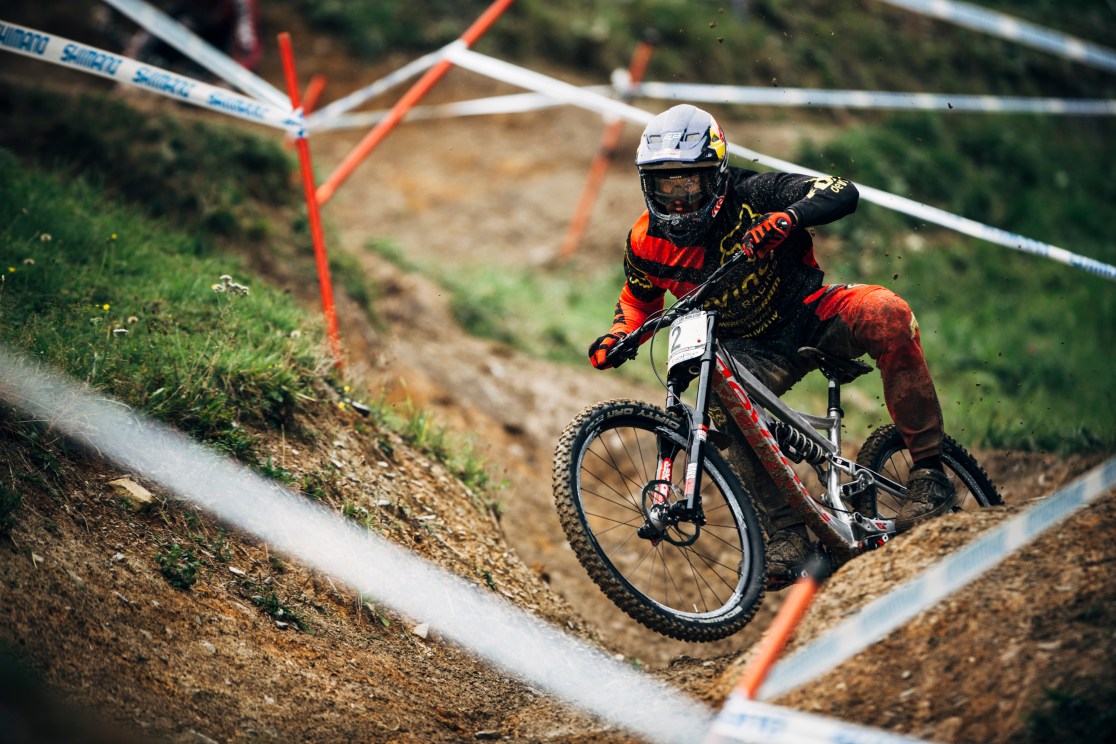
The World Cup photography – I shot it for 19 years, and then 2024 was my first year off – it became like wedding photography. Especially in the venues that you know. You start with a bike portrait at the beginning, the team portrait, and then there’s the practice, the track walk. There are those iconic shots, and those are iconic because they work! People say, ‘Oh, you guys are taking all the same shots’, but those are the spots that work. And so you kind of have to go through those mandatory photos. Then the pits… until the shot of the winner’s bike under the final arch. You have a set of photos that has to be done, and there’s not much room around it. You have to deliver those, and that’s it.
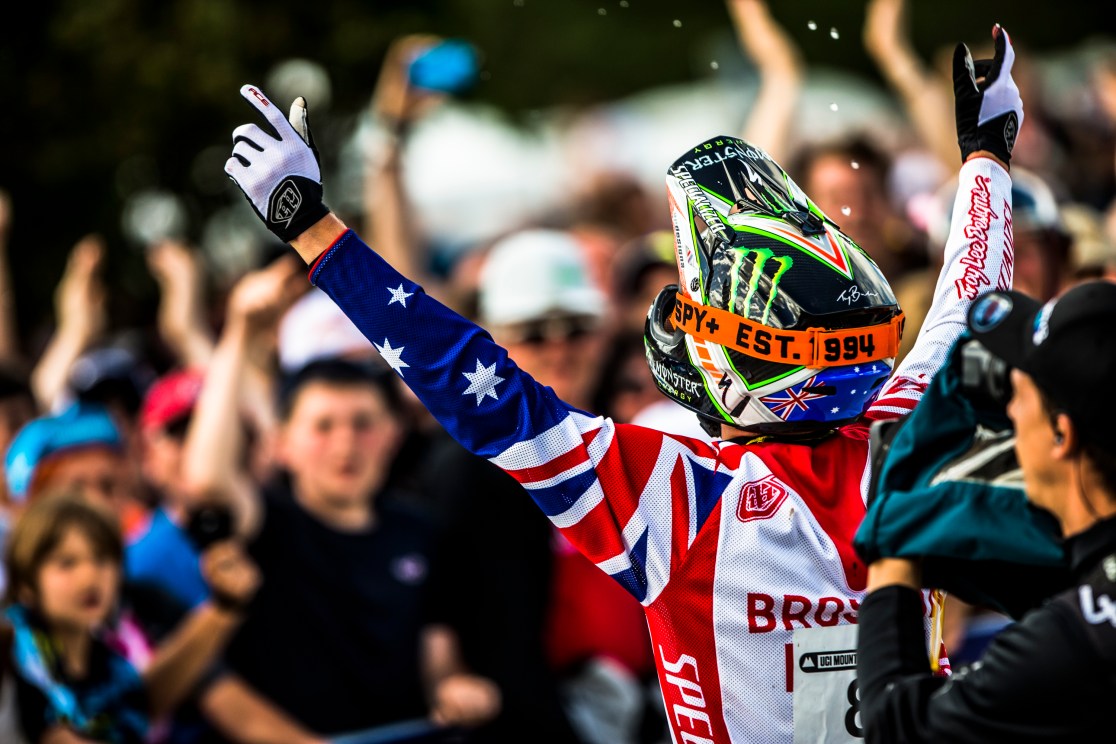
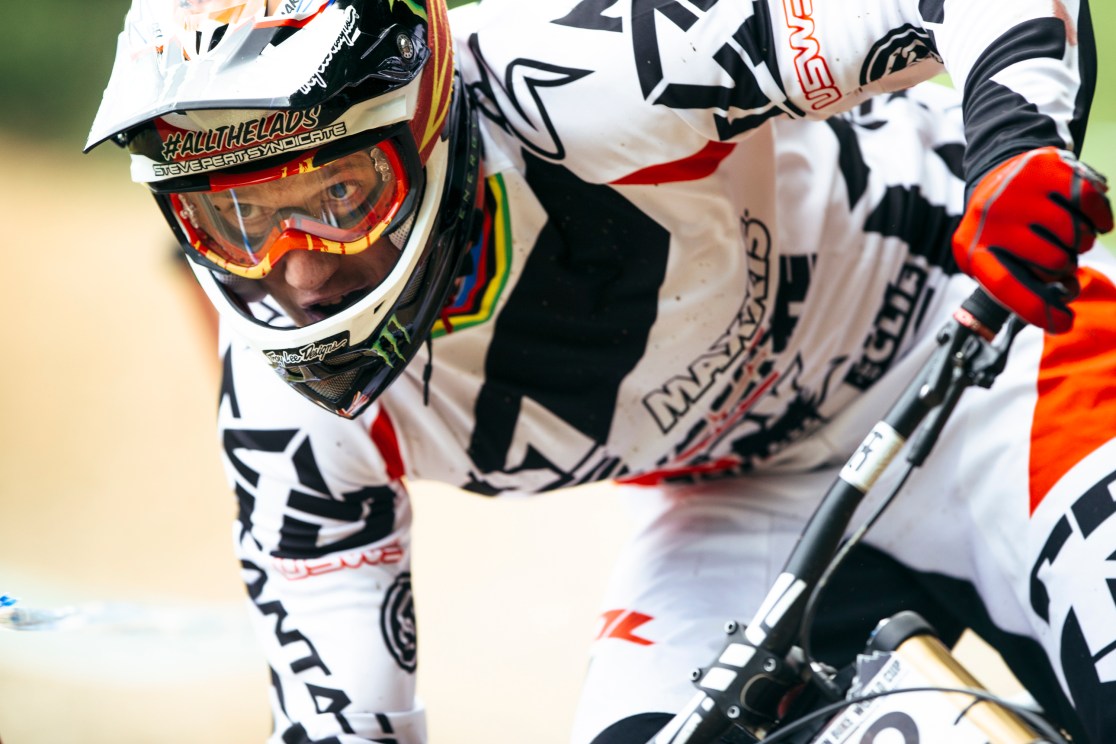
Back in the day, Dirt was the racing magazine, so everybody was trying to get on the cover, or the double page spread on Dirt Magazine… and then all the rest was a few shots. Now it’s the full story.
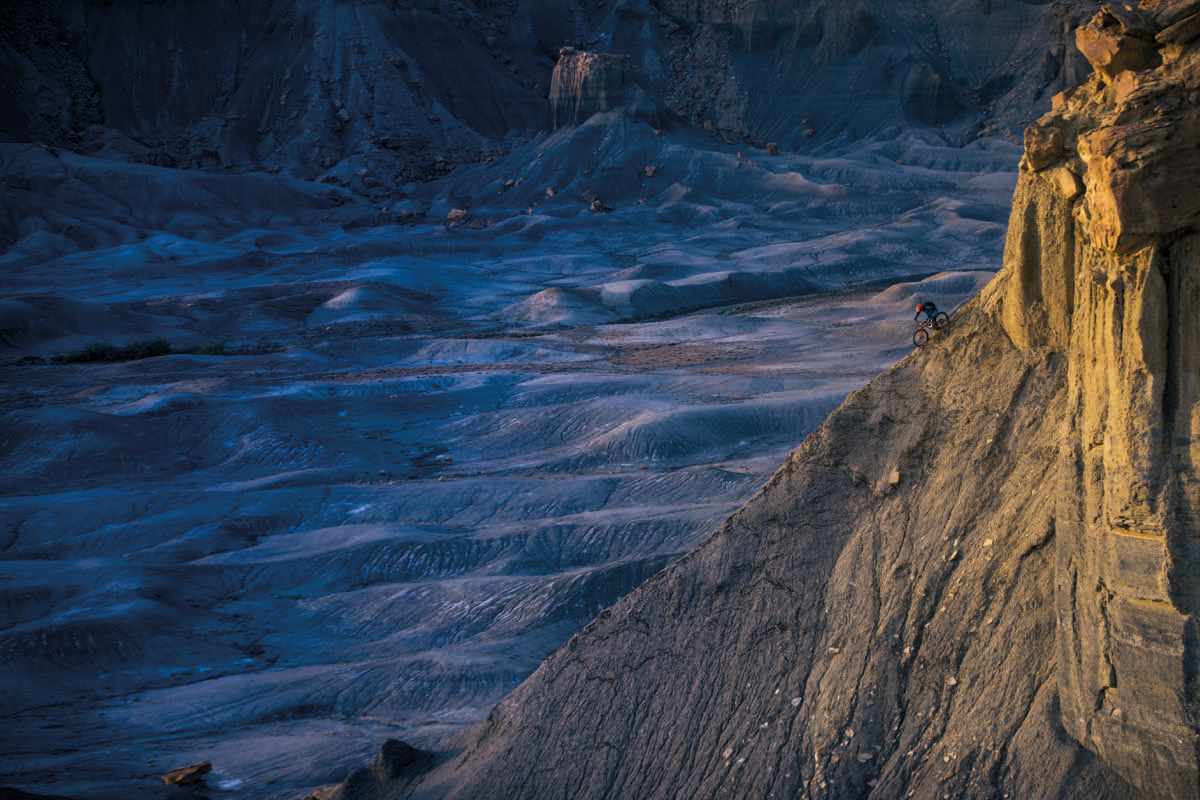
I wonder if it was easier to be creative in the past, when everything was new, or if all the modern technology now make it easier?
AdL: Well, it’s easier to take a photo right now. I was one of the last to switch to mirrorless cameras, and, they are amazing. It’s hard to ever miss focus on a shot… 30 frames per second. Those machines are amazing. They need some calibration, because the colour tends to be a little fake, too saturated, but when you find setting that you like, it’s just amazing, I was mind blown. So the tools are amazing, but there’s not much room for creativity, in racing. I don’t think it’s possible.
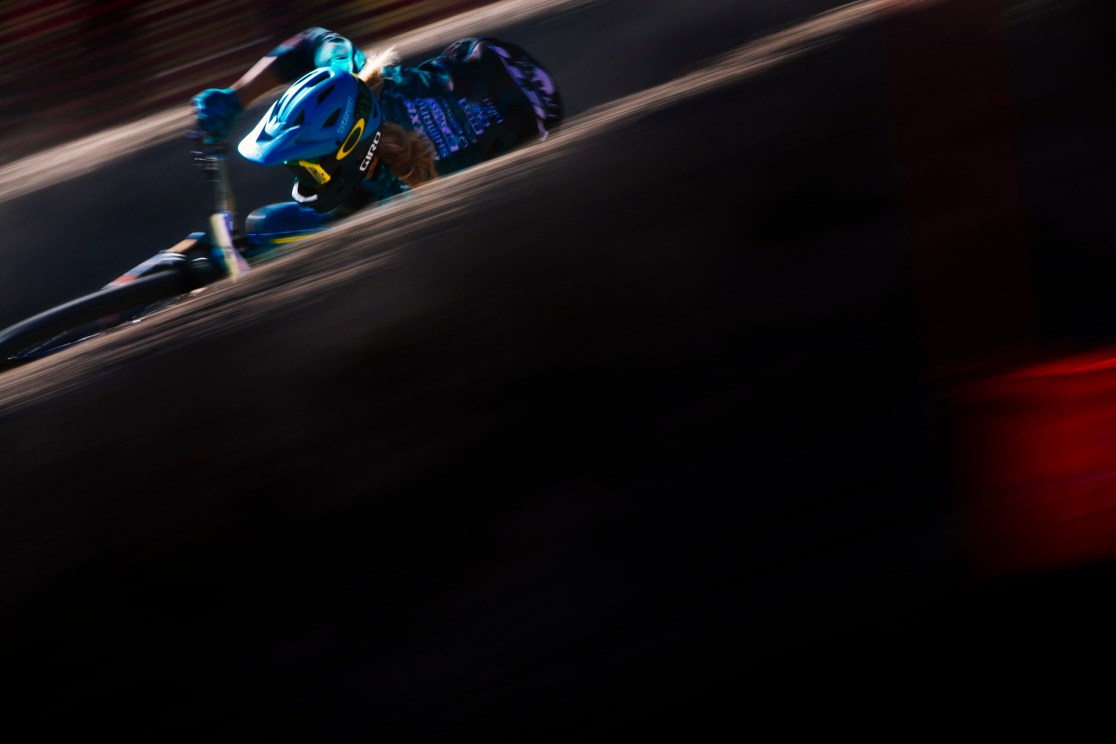
Creativity is not needed in racing [photography], because in the end, you need to see the product, or the model, the expression, in the best case the podium. The maximum creativity you can do is a panning shot! Or maybe when they change the schedule. Like in Andorra two years ago, they made, the practice at I think it was 7a.m, so the light was amazing. There was room for some creativity, but just by accident. Otherwise, I think that it’s, very hard. You get artistic shots – maybe with the small rider and the great background – and, your clients are not going to use it, because you cannot see the logo.
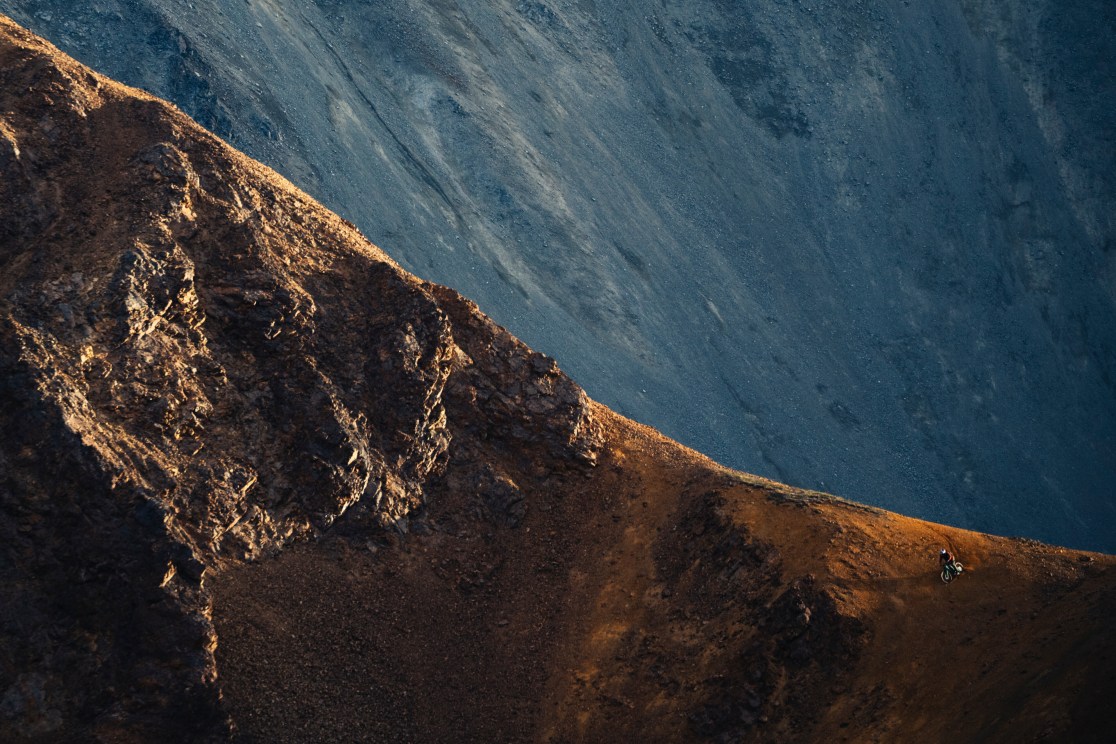
There’s no [creative] outlet anymore. There’s Singletrack, which is amazing, but there’s no magazines anymore. Instagram is too small. The environment is very important in my photos. Like in Brage’s [Planet Alaska project]. You want to show where he’s riding. On Instagram, you cannot even see the rider so those shots are pretty much gone. Back in day, you had the double page spread, and it was, ‘Oh my God, this is awesome, look, the little rider there!’ You could show the environment, the light, or whatever it was. So photography is changing, because the outlets that we have to showcase it have changed. It’s not possible to be creative in the same way.
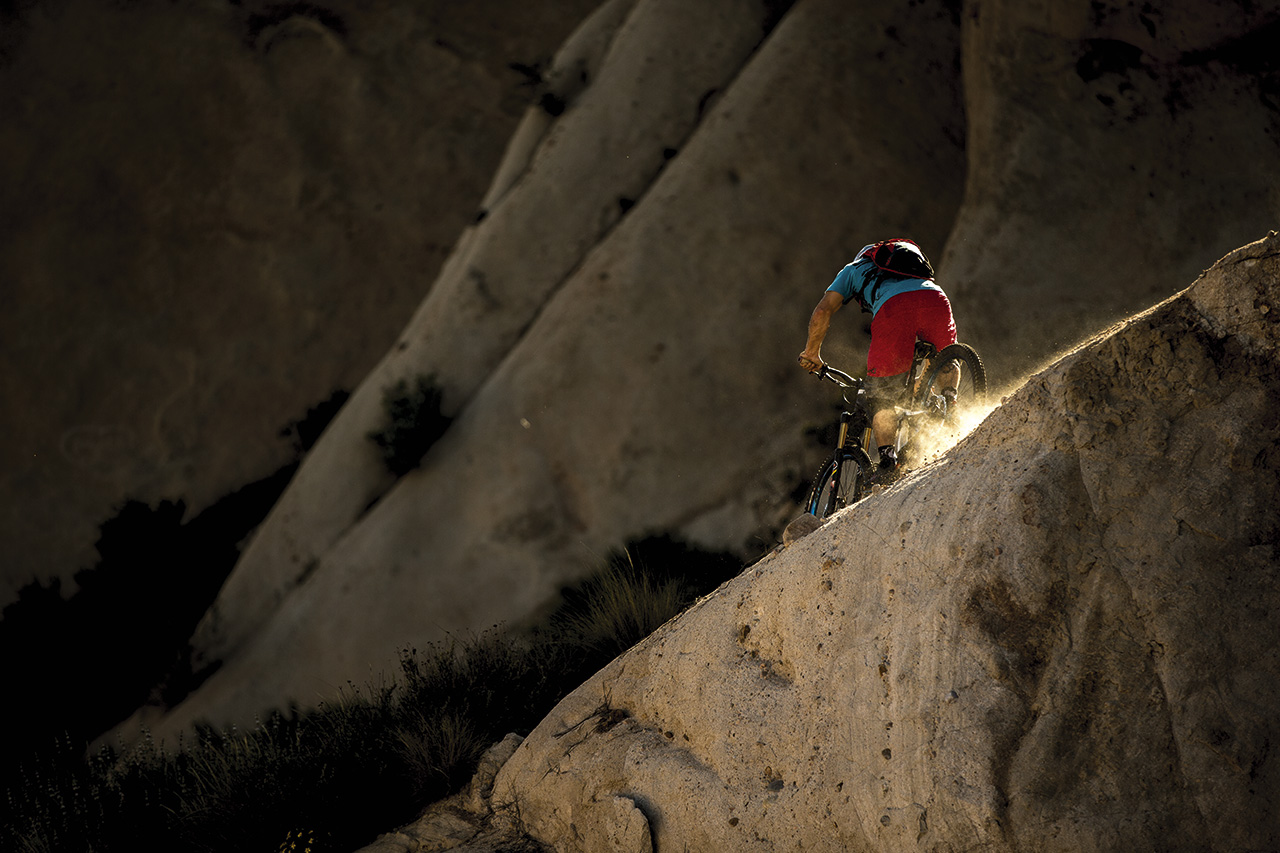
In general, I was looking for angles… until 10 years ago, the perspective, the point of view, the angle of the photo, was the most creative thing that you could do. If you found a new angle, you killed it, you nailed it. Now, pretty much all the angles are done. With all the small cameras and GoPros that you can put everywhere… those are done, pretty much. We have drones… So, it’s very hard, to get new angles.
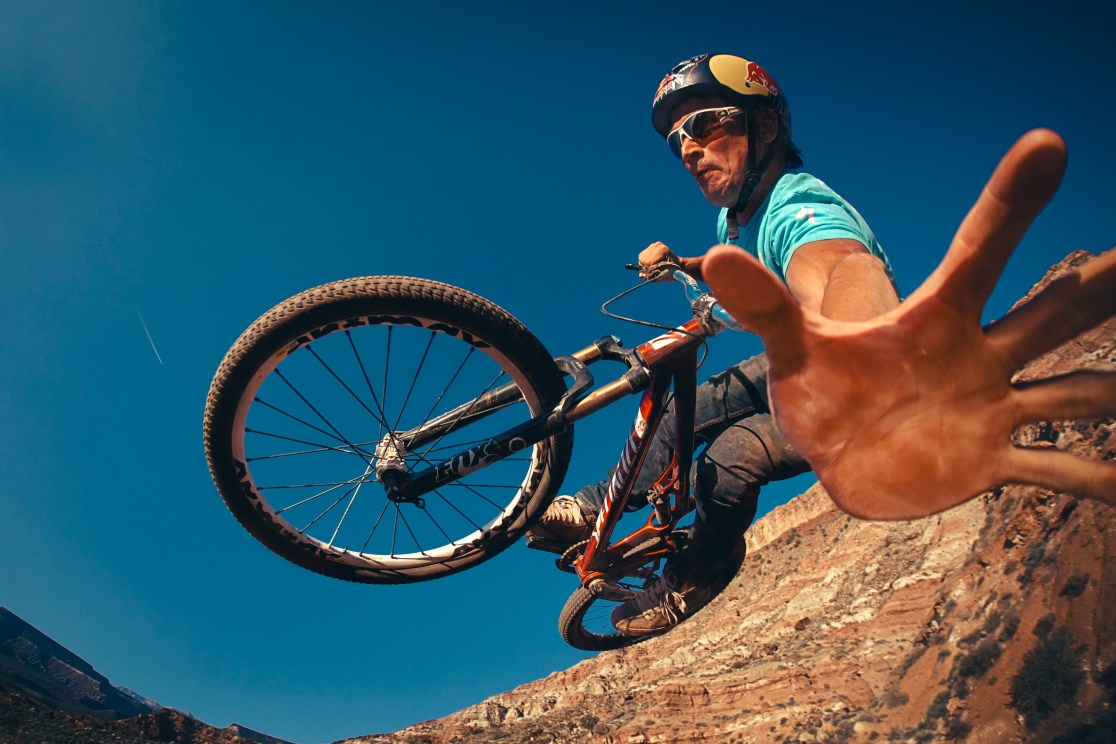
There was this amazing Gary Perkin [photo] at a Cape Epic. This unbelievable shot, more than 15 years ago, from the helicopter, that was like two shadows, two riders in the desert. You see this long shadow, of the two riders. And, at first, I remember, ‘What is that?’. While now, the zenith perspective, with the drone, is so basic that nobody even [notices]. So, I think that the angles are done. You need to be creative in other ways…lights, and shooting at night, or do a complete setup shot. But it’s really hard to imagine how to be creative these days, to do something new.
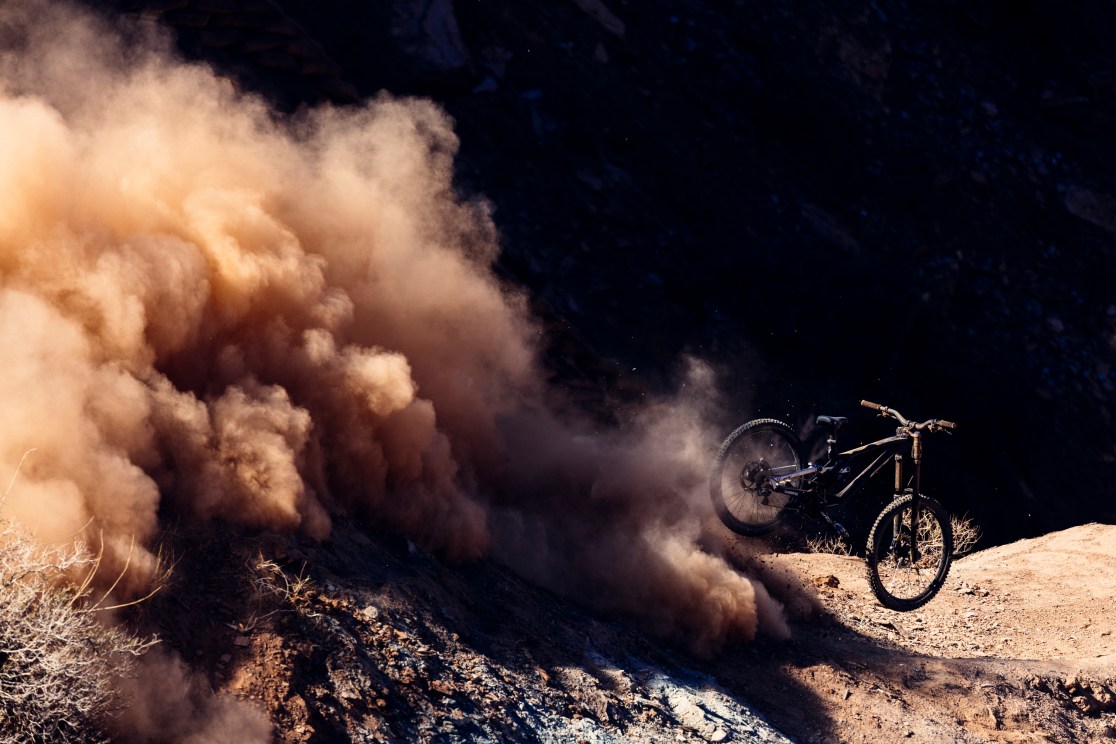
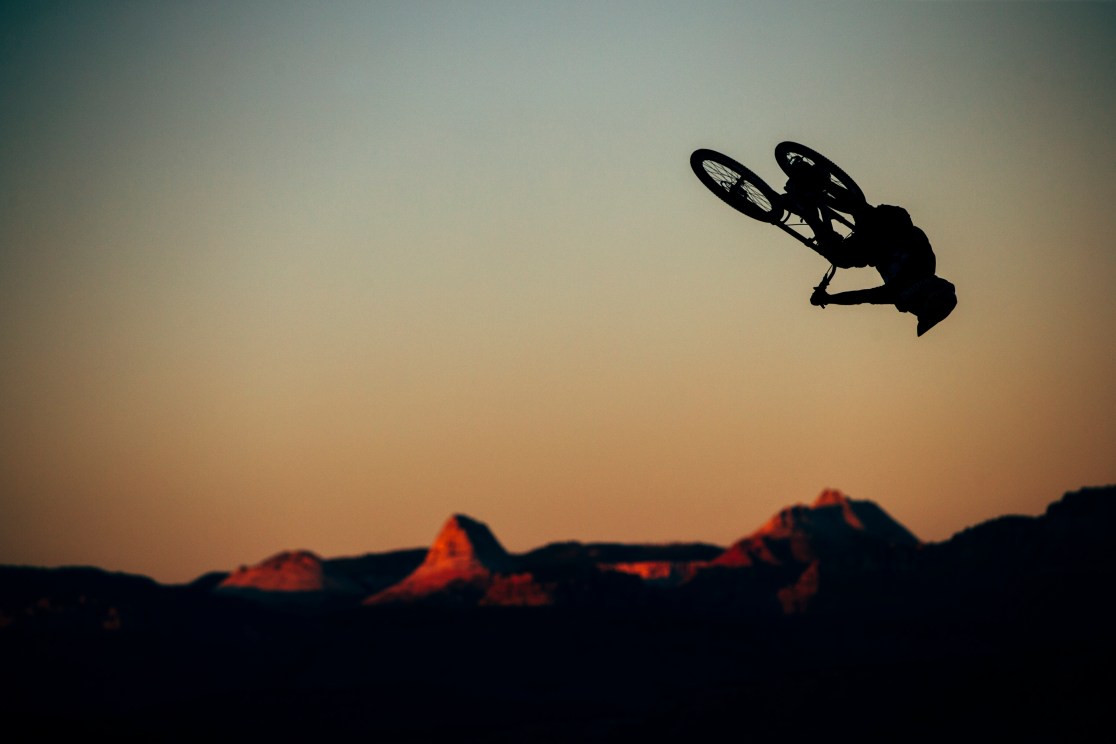
Ale prefers to try and catch a shot in ten minutes of natural light, rather than set it all up artificially for hundreds of chances to get it right. This seems to be more of a creative preference than an aversion to technology. While he was early to digital cameras and processing, he held off making the switch to mirrorless cameras until he felt like the technology was right. He could see others who were earlier on the uptake struggling with moisture ingress and colour balance, and preferred to stick with what he knew could deliver the images he was looking for.
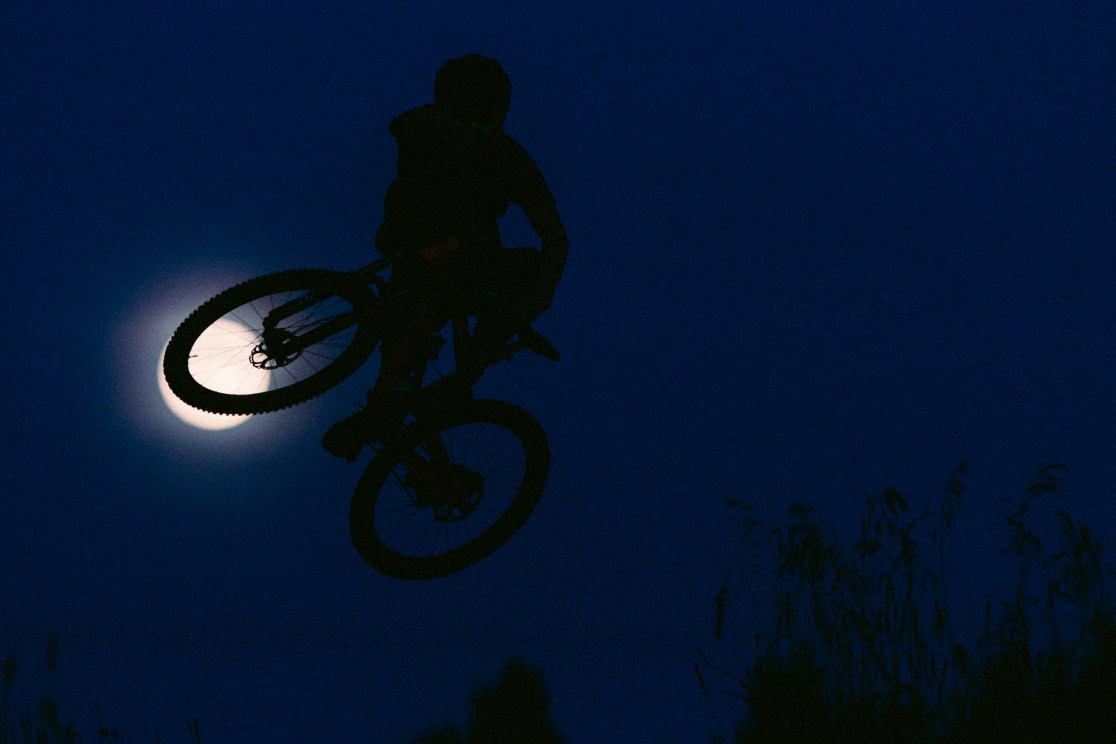
AdL: I wasn’t happy [with mirrorless camera images] at the beginning, because the colours were too saturated, there was too much information in the shade and the shadows. You couldn’t really have a full silhouette, for example. It was fake looking, everything was looking like HDR, too saturated, too sharp… I always shoot f2.8, or lower, as much as I can, because I like separation from the backdrop. I want to have it smooth, but with images too sharp, then it get crispy. All the background was crisp, so I didn’t like it at the beginning. But I appreciate 30 frames per second, the focus was good, and it was lighter. So I went into the settings… and now I’m happy. But I still use all my old lenses. I just bought a 24-70mm lense of the new generation. The problem with those lenses is lens flare is pretty much gone, which is technically a very good thing, but photographically I love lens flare.
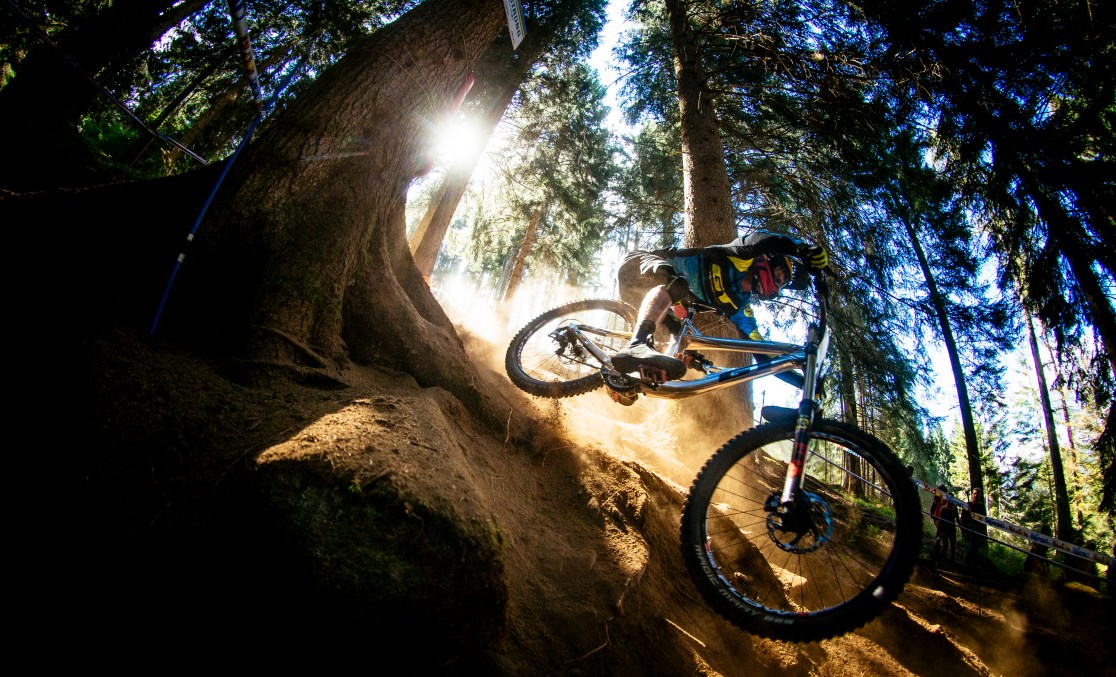
He doesn’t want to spend his whole life in front of a screen, adding effects to photos rather than capturing them in the camera. The prospect of more screen time is part of what stops him going back to where he started, with video.
AdL: I broke my fibular skiing, so I had a month to go back into video. I got very nerdy! Now, I can have a conversation with any video maker… But… I know, that it’s going to be a long process to get good… it’s so much more complicated than taking photos, and there’s a lot of time in front of the screen – in the learning curve and also in making the videos. There’s so many, people are killing it in video right now, that the gap is too big for me right now. I don’t want [more screen time] at this point. In photos, if you shoot for two hours, then you have maximum four hours in front of the screen. If you do videos, if you shoot for two hours, you have like, four days!
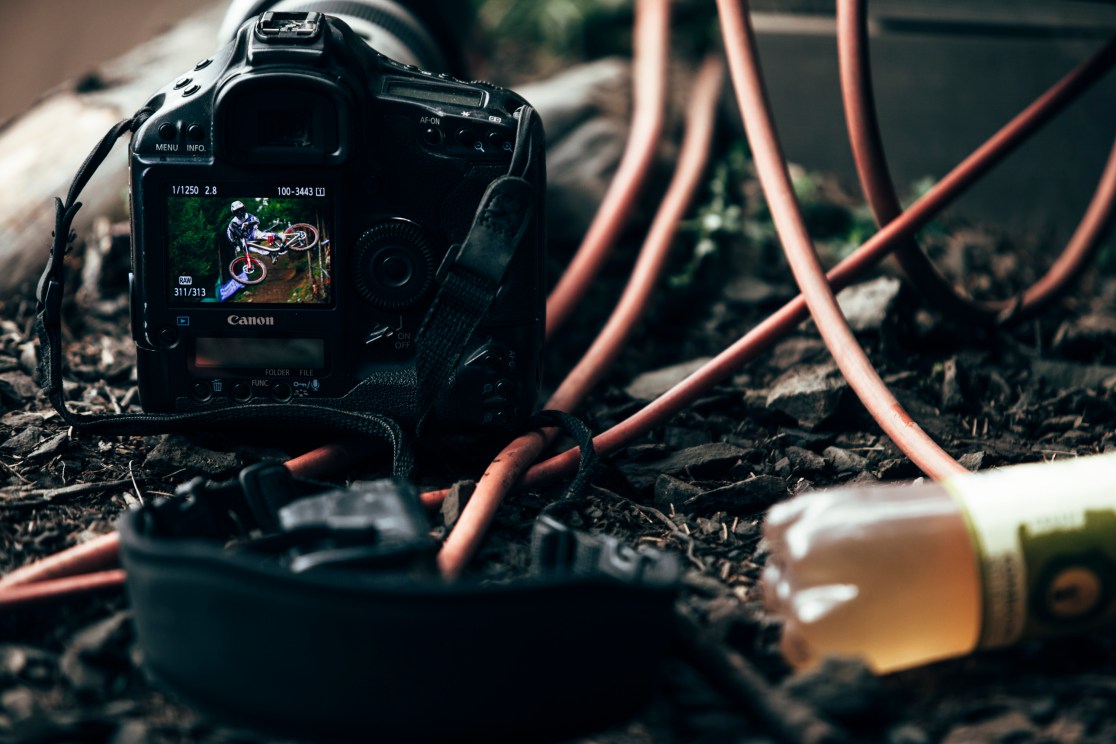
He says he’s done with following the World Cups too. Despite the secure income they provide, he’s ready to leave that behind.
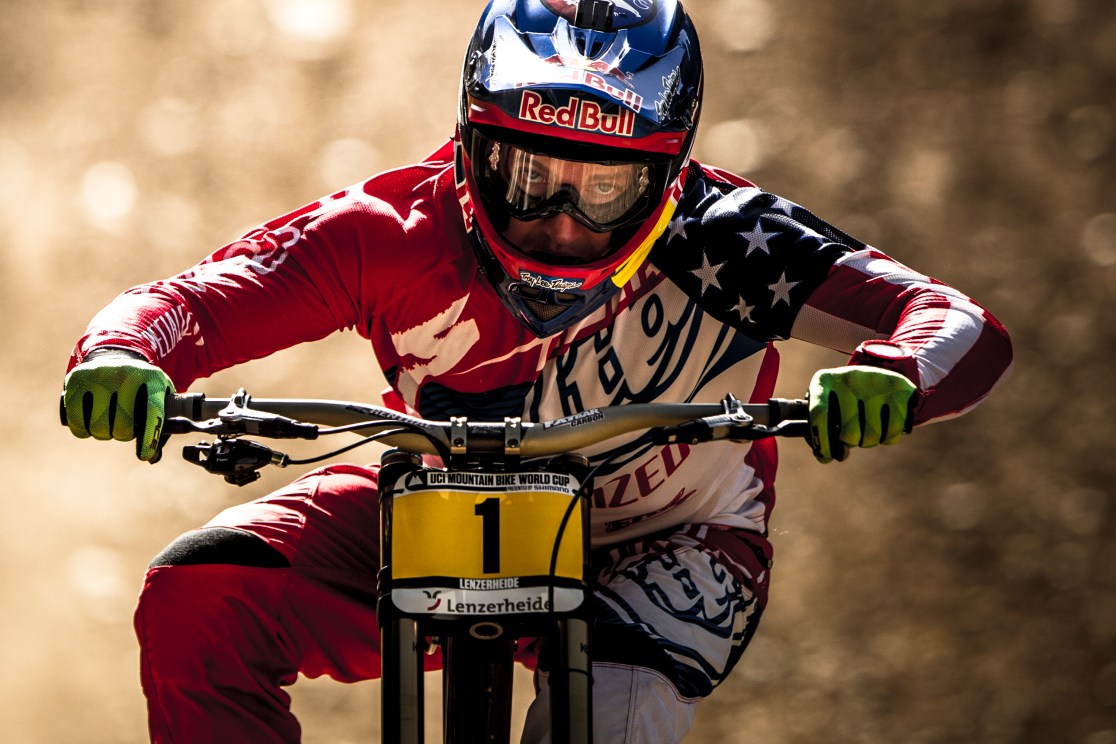
AdL: That’s it for me, 19 years, done. I’m totally done. I couldn’t find, the same motivation, anymore… You go back, in the same place, you do the same shots, because they work… But it’s getting like a routine, and the World Cup is getting, too serious, right now. There’s a lot of rules… the new owner… the first year, they made some rules that the photographers were not getting all the emotional shots on the finish line anymore…. The way they shaped the finish corral, we were restricted in a very small area and on the wrong side. They were grabbing the riders straight away to get the interview… totally TV owned.
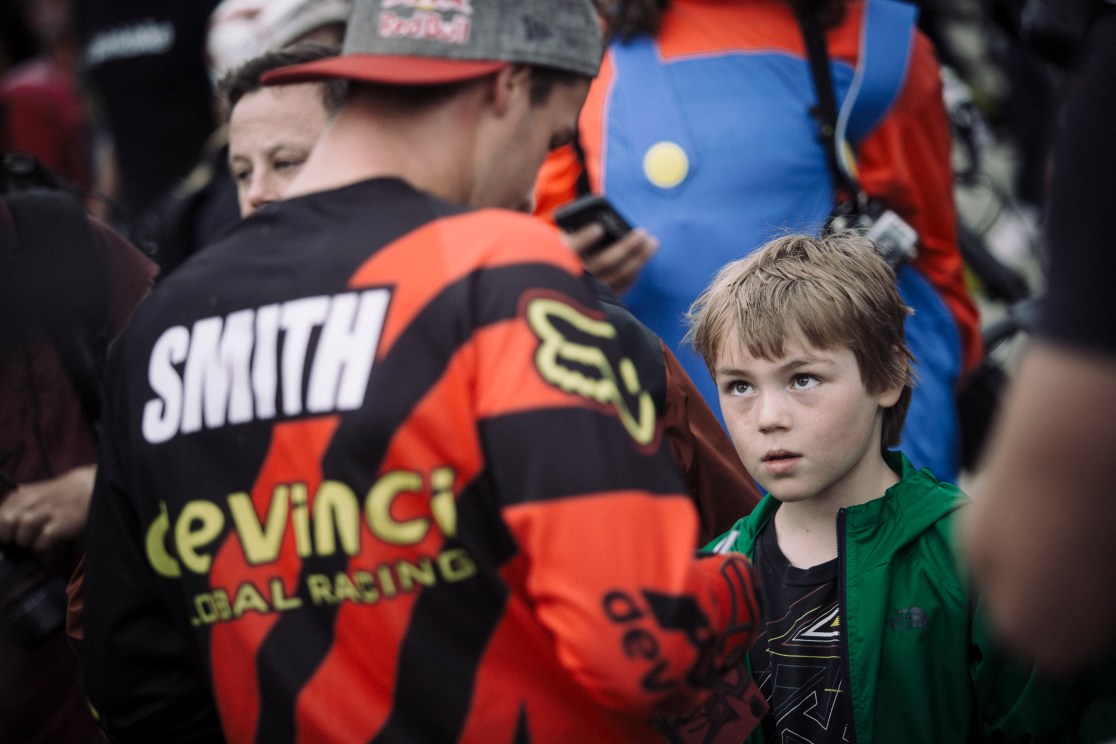
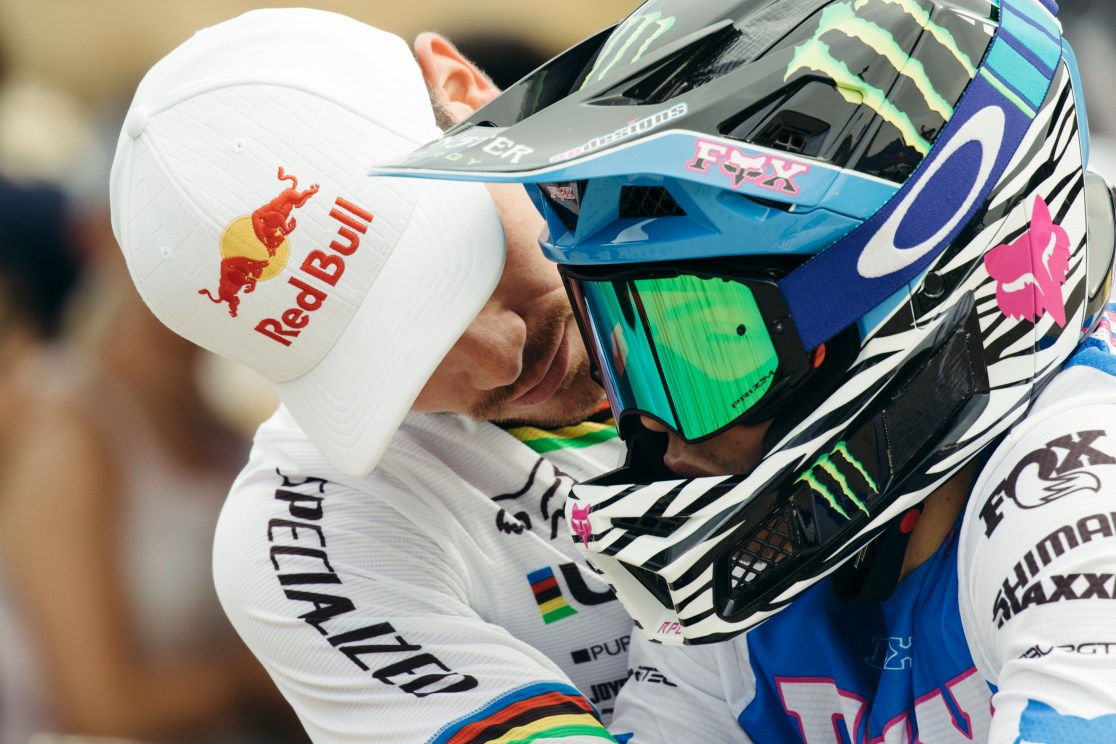
Ale explains that he’s not opposed to rules and restrictions – in fact, as a professional photographer and official registered journalist, it could be frustrating to have amateurs or locals turn up and have the same access as those who had to invest in being official and professional. But at the same time, he hopes it doesn’t end up being restricted to a single agency getting the rights to photograph World Cups, with all the usage restrictions that entails.
This year, he’s working with a few brands, shooting products for catalogues and websites, and athletes for the web and social media. He’ll also be at a few events – Red Bull Rampage, Hardline, Crankworx. But it’s clear he really enjoys working with Brage and having the opportunity to shoot creatively, without the product having to be the main feature.
AdL: I feel blessed to be the photographer of Brage, honestly. He is just doing the coolest things in freeride, which is my passion. Mountain biking is my passion, but the real niche of my passion is freeride, always has been. So, for me, it’s awesome to be shooting with Brage.
I like Danny McAskill’s [work] because it’s unique. And then there’s a bunch of young Freeriders in BC, like [Steve] Vanderhoek, that I think is doing good. But I think that right now Brage is opening new possibilities to show how you can ride your mountain bike. I’ve shot with a lot of very good freeriders and big mountain riders, and Brage is really pushing it to the next level. It’s getting closer to skiing and snowboarding rather than what has been done in mountain biking so far. So it’s opening a new path, I believe. I love everything he does because it’s kind of like reflecting the old school into the new school, which is awesome. Brage is unbelievable.
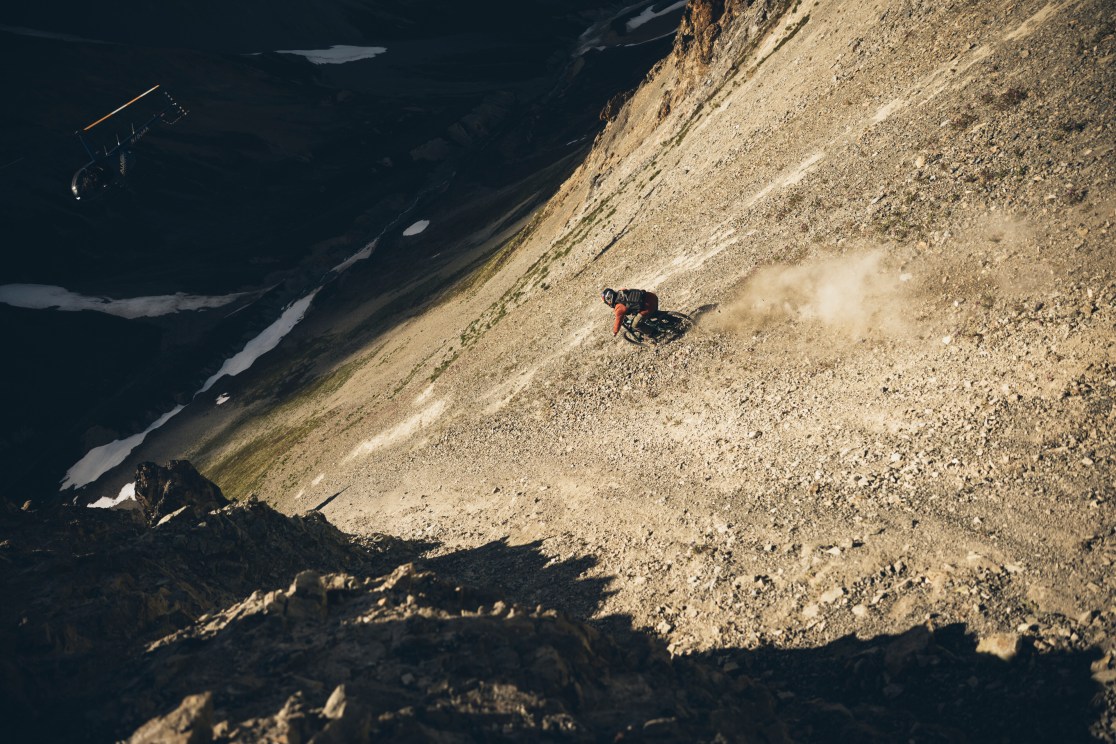
He’s young, but his roots are in the same videos that I was watching. I was already 20 plus when I was watching, and he was a kid inspired by his dad. When I went to his house the first time, he had all the New World Order DVDs, the same as I have, and he grew up with that. So we have the same roots. He’s actually doing it, I’m just filming it. So for me, it’s perfect.
Also, he’s not just doing the same thing again, but he’s put in some new school and his riding is really progressive. The vision that he has is amazing. I really respect that. There’s not many riders that do really their thing. Mostly [they’re] just following what is done and what is safe to do. I’m talking at every level… There are just a few riders doing their thing. And Brage is one of those. Remi [Metallier] is another one of those… Fabio Wibmer is doing his thing. I’m not a big fan of what he’s doing, but at least it’s his thing! And then Kilian Bron is doing his thing. And that’s it. All the rest is just copy and paste, basically. So Brage is one of those that is doing his thing. He has a unique vision.
It’s obvious that freeride is where Ale’s heart really lies. It’s a vibe that suits his world view.
AdL: Being a little loose in freeride and in mountain biking is good. This is also another thing that took me away from the World Cup: It was too serious. Everyone is stressed. Nobody is smiling. It’s too serious, too dramatic – while mountain biking is fun. It has to be fun. I kind of disagree with the industry because they advertise just with racing. It’s one of the few sports in the world, especially in action sport [that does this]. Nobody advertises with racing… they advertise with lifestyle, with people having fun in the mountains, in the desert, in their environment, with friends, cracking a beer, doing whatever you want. Most of the customers are on a schedule because they work all week. You want to put them on a schedule, on the clock, on the weekend, too? No, maybe they just want to have fun.
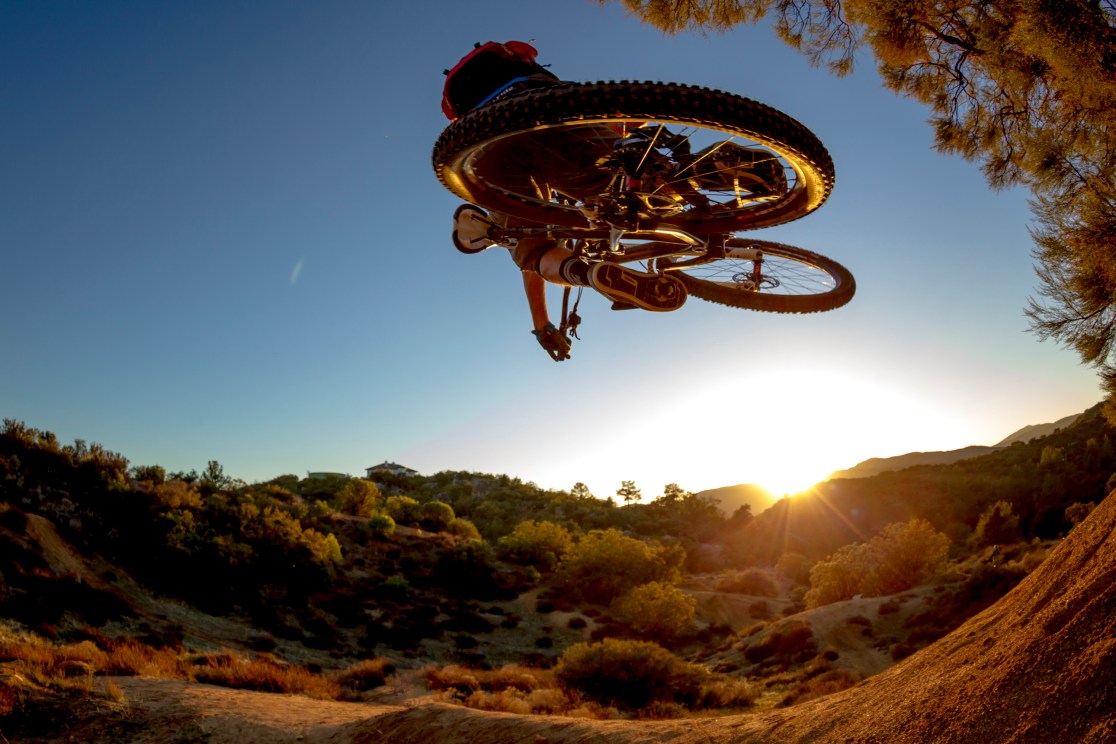

I want to just explore, ride, stay with friends, and have a nice day. It seems that everybody has to be a racer, otherwise there’s no mountain bikers. This is why I love freeride because it’s more on my spirit of mountain biking. My spirit. What got me close to a sport like this? Nature, adventure, exploring, friends, community.
Ale appreciates riders that are prepared to work hard for a shot. It’s clear that Brage is one of them, and that Ale thinks this is a fading skill. He tells me his favourite riders are also the most hard working mountain bikers, and Brett Tippie, Richie Schley, and Mark Weir are his top three. I’ve seen Tippie in action, and can confirm he is always ‘on’. Seeing him flip into professional presenter or ambassador mode is quite a thing to behold.
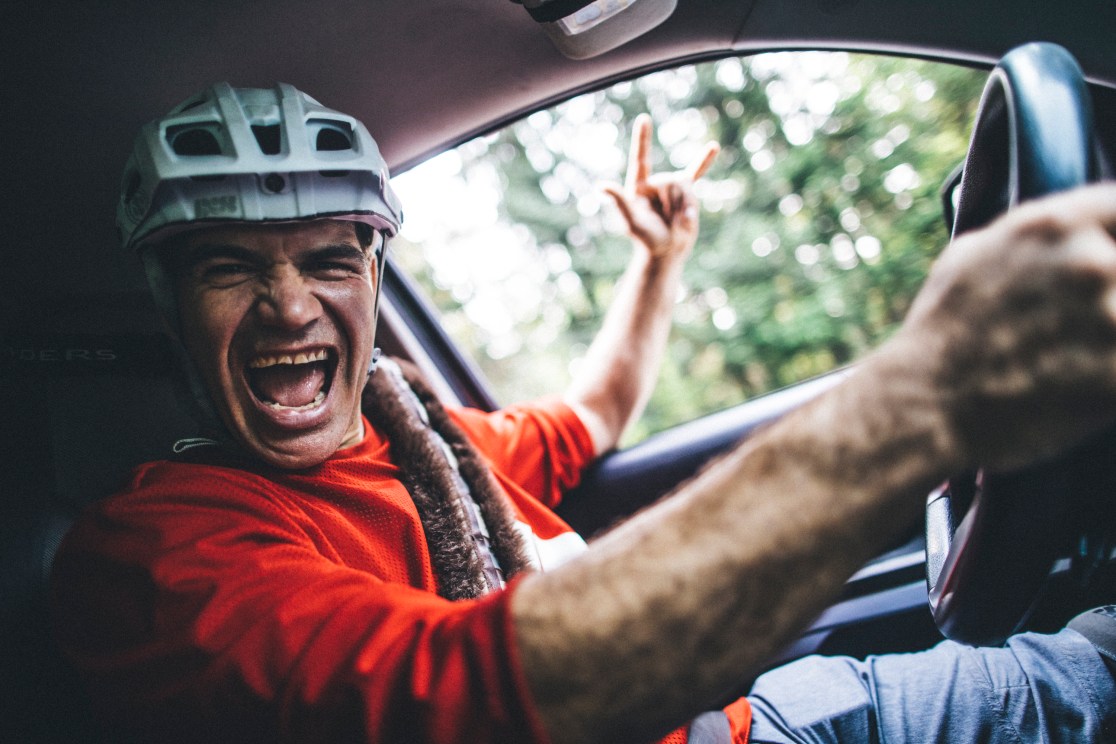
AdL: His mission in every shoot, he one told me, is to get the photographer tired. He wants the photographer to call the shoot and say, ‘Okay, I’m done!’. That’s his mission.
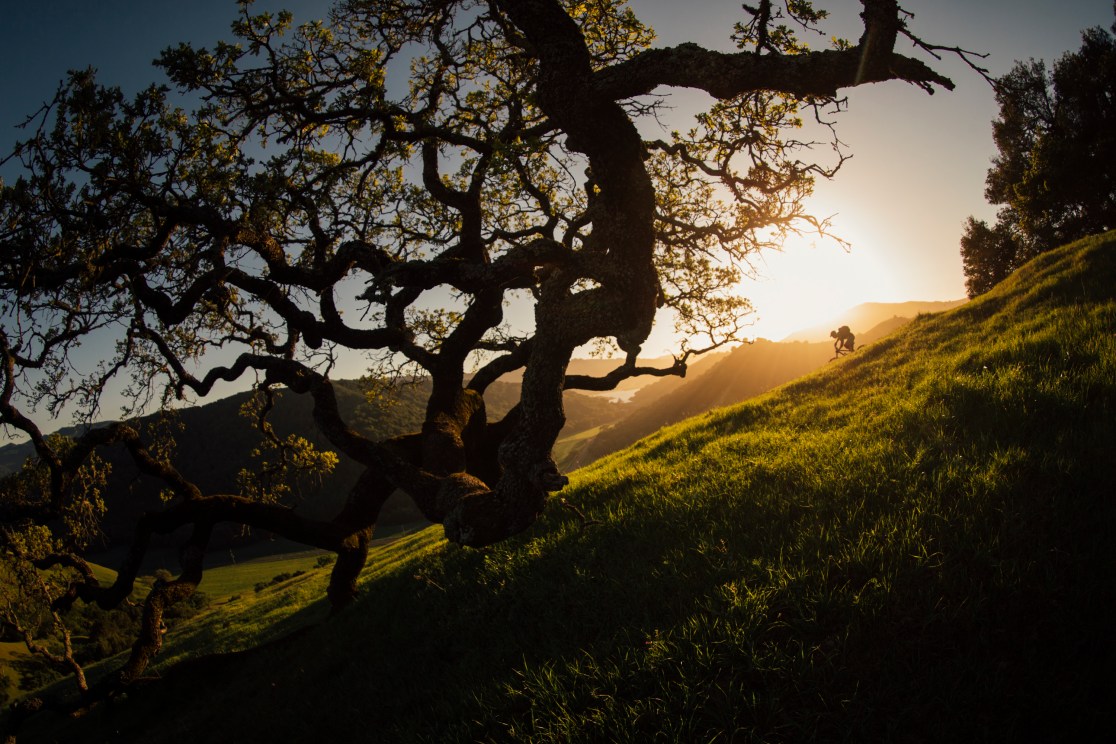
And they are proactive. You can talk about photos, they know what they’re doing, because they’re coming from a tradition of when the photo was important, the single photo, the shot to be on the magazine, in order to have visibility. So they really like photos.
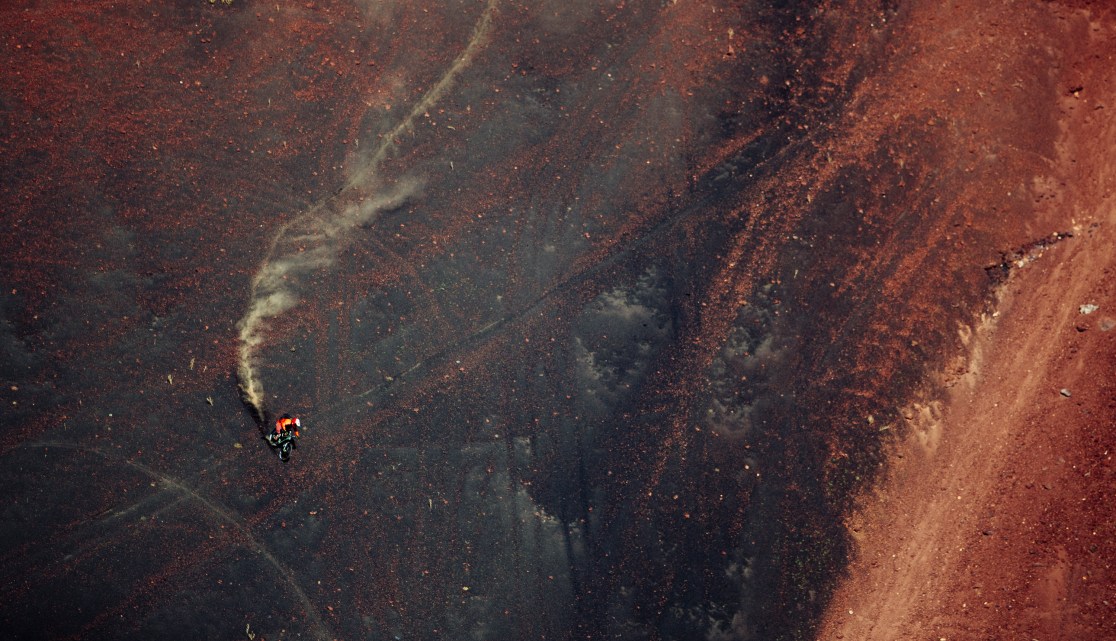
Brage is like that, but most of the kids, they don’t care. Whenever they have a phone photo for Instagram, a better video, that’s fine, you know? Sometimes I go with these young pro riders and it is short – one and then they’re done. While you have to work on the photos and they don’t know what it takes. Time, life, and all that stuff. Those guys don’t really know. So, Brage, Richie Schley, Brett Tippie, and Mark Weir, have been the riders at this point that I love to work with the most.
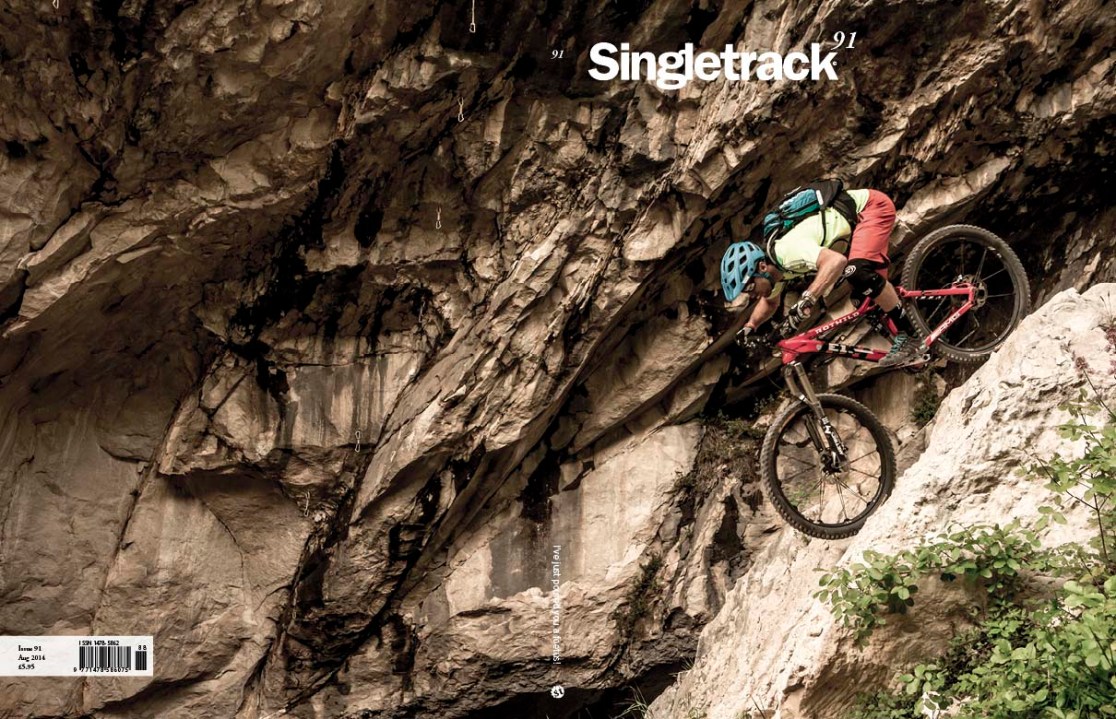
Ale has had the opportunity to shoot all kinds of mountain bike events over the years. I wonder if there’s anything left that he’d really like the chance to be at, or if he’d even like to switch it up do a different industry? He’s clear that, while he won’t pass up the opportunity to shoot something different, he’s not in the business of chasing other industries. Mountain biking is his passion, and with all his connections and knowledge, he knows he can deliver the goods.
AdL: I don’t feel any attraction to go in some studio in Milan to shoot fashion or like, or being with like 50 people around a car to take a shot. Even if it can be good money… it’s not for me… I don’t want to go anywhere else. I just hope to be able to do it until I can, exactly what I’m doing, because mountain biking is my passion, it’s my environment, I know how to do it. I have a lot of experience.
It’s mostly places [I’d like to go to]. I’ve never been to Japan and I’ve never been to South America and I would love to shoot there, Patagonia. It’s more about the destinations. I think I’m good with contests and event photography. There’s nothing that I’m going to miss.
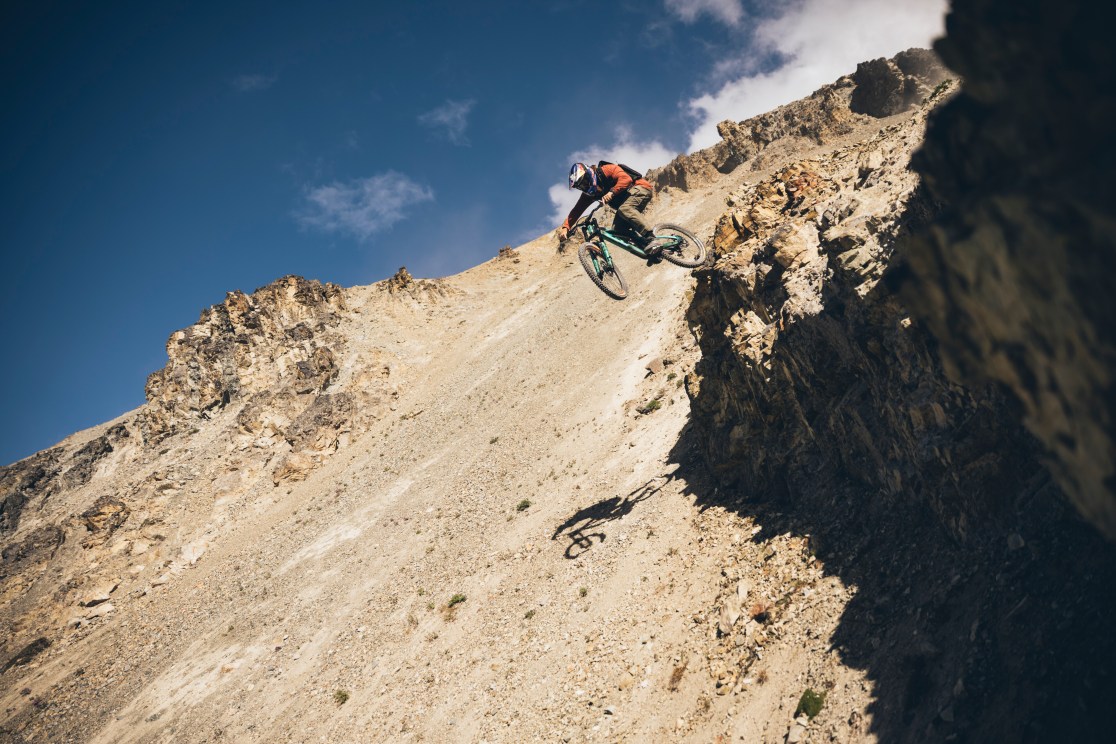
Or maybe something unexpected, like Alaska. It was not on my bucket list of destinations, but it was epic. It was amazing to just be there and see that kind of scenario. It was awesome…. I never wanted to go to Norway, or to go to Alaska. And thanks to Brage, I just got to. And it was amazing. I loved it.
We’re glad Ale was there to capture the shots. You’ll find his picture wrapped around issue 160 of Singletrack, and also inside, in our interview with Brage. As you sit and read yours, perhaps take an extra moment or two to appreciate the 20 years of experience that went into those images. As Ale points out, there are fewer and fewer opportunities to showcase photography in this way. Enjoy it!
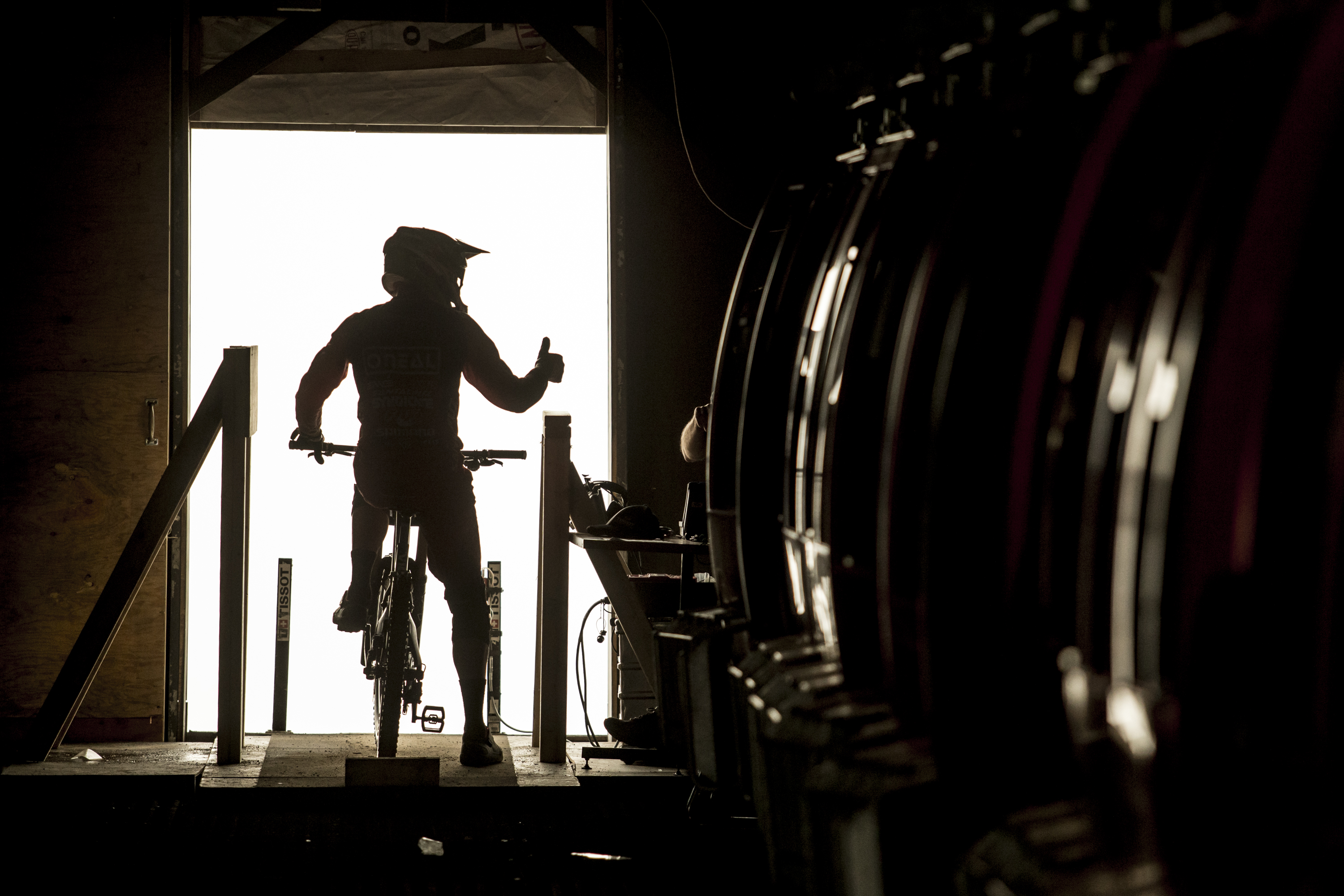






He really is a very good photographer isn’t he!
Brilliant interview, going to have to re-read it on my desktop just so I can take a proper look at those photos…